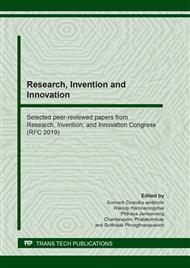p.135
p.143
p.152
p.160
p.169
p.175
p.182
p.190
p.198
The Effects of Various Ratios of Hybrid Filler to Rubber Vulcanisates Properties Based on Passenger Car Tyre Tread Compounds
Abstract:
Solution styrene-butadiene rubber (SSBR) reinforced by hybrid fillers of carbon black (CB) and silica (PSi) was prepared with various CB/PSi ratios. Rheological and mechanical properties of rubber compounds and vulcanisates were investigated. Results of compounds demonstrate that, with increasing CB fraction, increases in the magnitude of the Payne effect and Mooney viscosity were found. On the contrary, with increased loading of PSi, increases in optimum cure time (tc90) and cure torque difference were evidenced. The results suggest superiority in filler dispersion level and cure efficiency in the systems filled with high PSi fraction due to the presence of Bis [3-(triethoxysilyl) propyl] tetrasulphide (TESPT or Si-69) as a silane coupling agent. As for vulcanisate properties, the systems with increased PSi fraction exhibit enhancement in mechanical strength and elastic contribution, which are in good agreement with rubber compound properties. Also, the decrease in loss factor at 60 °C was observed with increasing PSi fraction, suggesting the desirable reduction in rolling resistance of tyre tread.
Info:
Periodical:
Pages:
169-174
Citation:
Online since:
August 2020
Authors:
Price:
Сopyright:
© 2020 Trans Tech Publications Ltd. All Rights Reserved
Share:
Citation:


